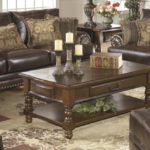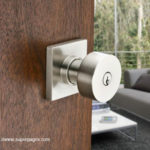
The more traditional types of upholstery made an appearance in the beginning of the 17th century when it was fashionable for wealthier families to have luxurious pieces of furniture in their home, such as padding on chairs. The padding was, in fact, merely stuffing comprised of different materials including feathers, grass, animal hair and sawdust. Upholstered chairs are still popular today and many antiques have had to be restored, especially fire and flood furniture restoration to bring them back to life.
This article will provide information on the different types of upholstery through the ages.
1. Algerian Fibre
Algerian fibre is a type of material sourced from palm leaves. The leaves are shredded using a shredding machine and then laid out into the sun for drying. The procedure can take several months to perform and once dried, the strands are twisted to form ropes. The natural colour of the Algerian fibre is green, but it can be dyed black for sterilisation purposes and removal of tiny mites that are found in the fibre. This type of material is one of the strongest fibres and is highly resilient against all elements.
2. Curly Black Fibre
The curly black fibre is a derivative of the coir fibre and is found between the outer skin and the hard internal shell of a coconut. Due to its flexibility, spring and strength, this type of fibre is typically utilised in doormats, mattresses and brushes. Furthermore, its dexterity and wide availability makes it a replacement for the Algerian fibre as a type of upholstery material.
3. Alva Marina
The Alva Marina material is a type of seaweed located on the southern coast of France and along the Baltic ocean coastline. It was one of the initial types of upholstery used by Victorian families; however, as time passed the seaweed dried and it became harder and more brittle. Eventually, the seaweed would change into small flakes removing the padding feature. Nowadays, it is no longer available within the commercial upholstery industry.
4. Feathers
The primary type of feather used in upholstery is a down feather, curled feathers and chopped or milled feathers. The down typically originals from geese, swans or ducks; however, swan down is not available nowadays because it is a protected species. The down feather is found as part of the undercoating of the outer feathers and because it is so soft, it is regarded as the most beneficial material used for upholstery. Some of the most popular and high-quality furniture utilise down feathers for upholstery purposes.
5. Mill Puff
Mill puff was one of the most popular materials for upholstery and bedding in the 18th century. However, as time progressed and the grade of cotton wool became inferior the product was continued to be used with the same title. When picked and collected, the mill puff cotton balls are processed passing through a gin causing the fibre to separate from the seed.
After this separation, the cotton can be used for spinning and the remaining seeds are sent through an oil mill where they are cleaned. Once cleaned, short fibres that are unsuitable for spinning are removed; however, the cleaned seeds are sent to be crushed for oil extraction. The machine used to perform this procedure is known as a linter, hence the name ‘cotton linter’.
6. Skin Wadding
When a layer of teased cotton is sprayed with starch, it will form a skin over the cotton surface developing a bond that holds all fibres together. This bond is known as a skin wadding and is typically used as a topping item for other upholstery materials including open horse hair or calico. The skin wadding is highly durable and protects the surface from protruding padding; thereby, forming a more comfortable and softer upholstery finish.
7. Interlaced Matting Or Padding
Interlaced matting or padding occurs when different fillings, such as fibre or horse hair, are crossed or carded onto a lightweight hessian base material. The base is then sent through a needling machine where the needles move up and down forcing fibres through the hessian material on the downward stroke, but releasing them when moving on an upward stroke. This filling is common in bedding and many upholsterers opt for this method of manufacturing because of its efficiency when compared to looser fillings. Moreover, the interlaced matting is more durable and can be placed over spring units without fear of damage.





